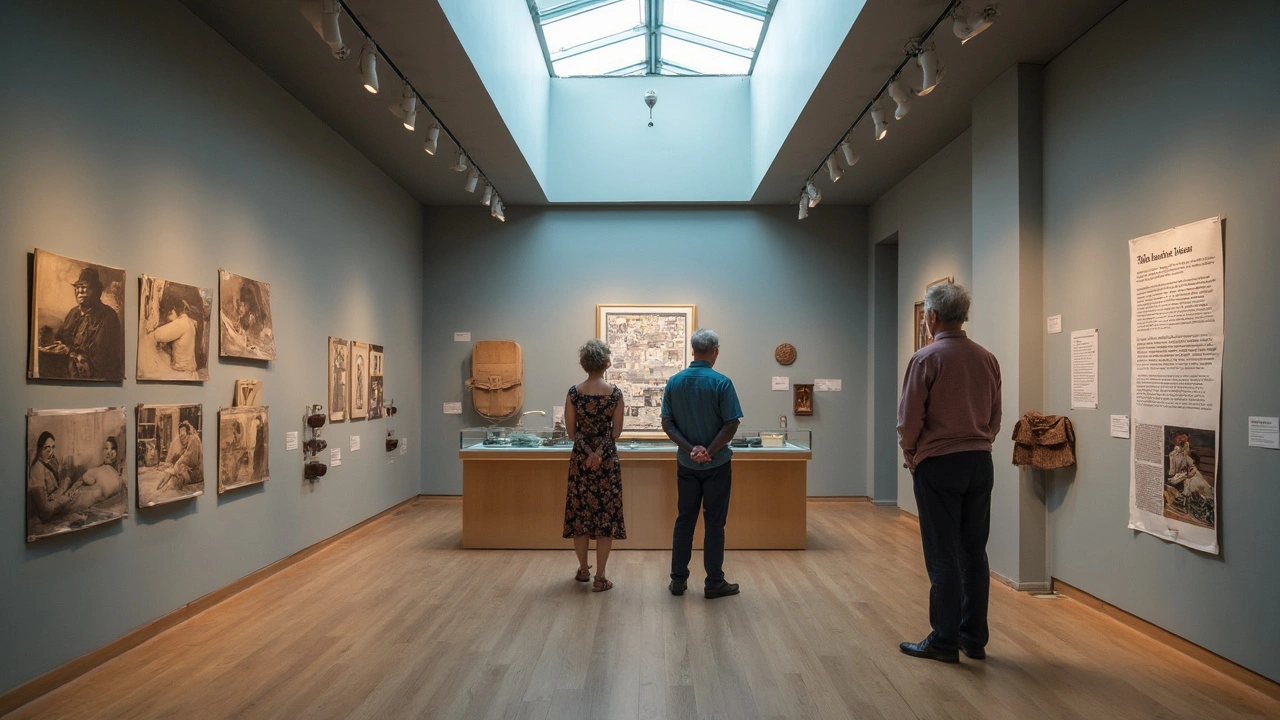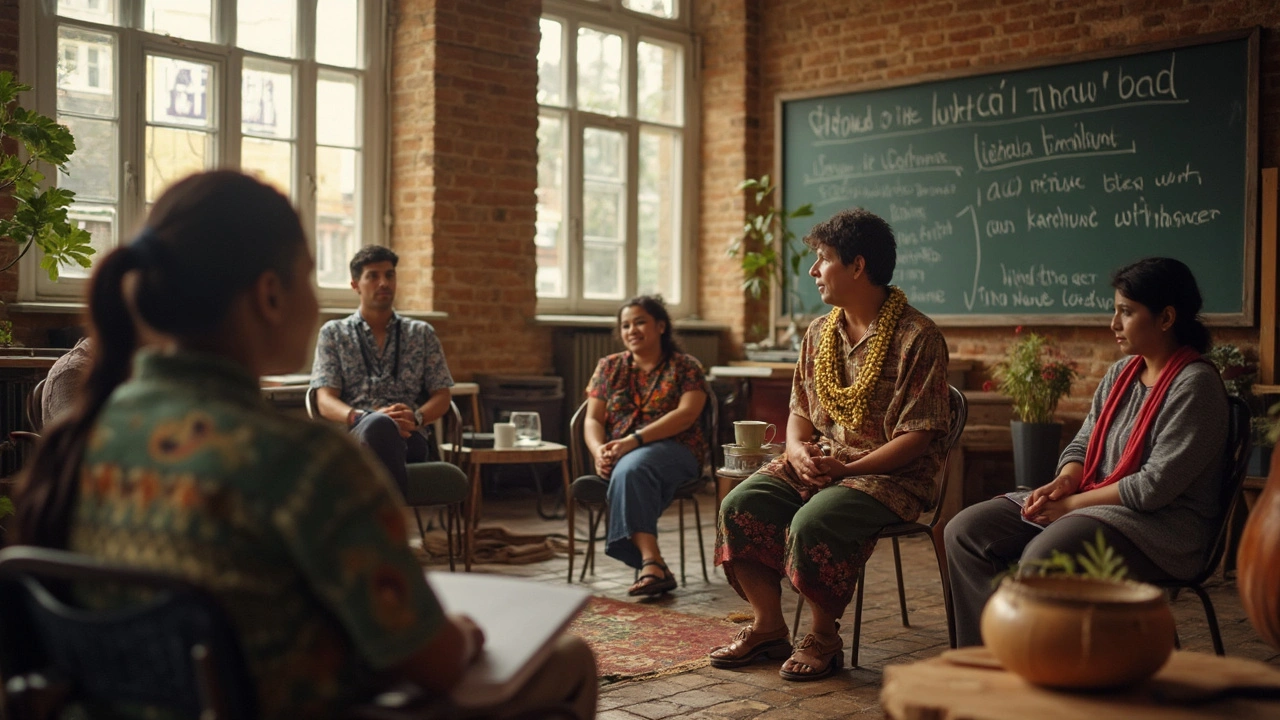The word “kahuna” got turned into a punchline for decades. The real thing never was. It’s a living, layered Hawaiian tradition of expertise-from navigation to healing-that went quiet under colonial pressure and is now returning to daily life, clinics, and bodywork studios worldwide. If you clicked this, you likely want two things: the truth behind the term, and a practical way to experience it without stepping on culture or falling for hype. You’ll get both here.
- TL;DR: Kahuna means “expert” or “specialist,” not just a massage. Lomilomi is the Hawaiian bodywork within that wider tradition.
- Hawaiian practices were suppressed for much of the 19th-20th centuries; a cultural renaissance since the 1970s has brought them back.
- What to expect: long, flowing forearm strokes, rhythmic pacing, breath, and a deeply nurturing setup. Evidence supports massage for stress and pain; claims beyond that need caution.
- Choose practitioners by lineage, licensing, and consent. Avoid “big kahuna” gimmicks and anyone dismissing safety boundaries.
- Start gently at home with breath and self-sway. If you train, follow teachers connected to authentic lineages and respect local laws.
What “Kahuna” Really Means (and What It’s Not)
Kahuna isn’t one thing. In Hawaiian, it’s a title for a master in a discipline: a master navigator, a temple priest, a herbal medic, a canoe builder. There were specific names-kahuna kāula (seer), kahuna hāhā (diagnostician), kahuna laʻau lapaʻau (herbal healer). Bodywork is part of this wider ocean, known as lomilomi. Today, people often say kahuna massage, but what most mean is a style of lomilomi taught by modern carriers with different lineages.
Two names you’ll hear a lot: Aunty Margaret Machado, who taught lomilomi widely from the Kona district on Hawaiʻi Island, and Kahu Abraham Kawaiʻi, associated with the “Temple Style” long-stroke approach you see in many retreats. Both helped carry bodywork into the modern era while honoring roots. Different schools emphasize different elements: long forearm strokes, flowing transitions, prayer (pule), breath (ha), chant, joint mobilization, and sometimes rhythmic movement around the table.
What it’s not: a generic deep-tissue session with tropical branding. Also not a license to play fast and loose with consent or draping under the excuse of “tradition.” Reputable practitioners train for years, keep clear boundaries, and know when to refer you to medical care.
One more clean-up job: the phrase “big kahuna.” It’s a 20th-century misfire that turned a sacred title into a joke. In 2025, more practitioners and spas are retiring that phrasing-good news for cultural respect.
From Suppression to Renaissance: How the Art Was Reborn
Why “forgotten”? Because much of it had to go quiet. After Western contact in the late 18th century, missionary influence and new laws changed Hawaiian religious and healing life. By 1896, Hawaiian language was banned in schools, which undercut the transmission of chants, prayers, and nuanced terms. Families kept practices alive at home. Some healers worked privately, away from hostile eyes.
The turn came with the Hawaiian Renaissance in the 1970s. Hula reclaimed public stages. Hawaiian language returned to classrooms through immersion schools. In 1978, the Hawaiʻi State Constitution recognized ʻŌlelo Hawaiʻi as an official language. Healers began to teach more openly again. Aunty Margaret taught lomilomi publicly; Kahu Abraham taught temple-style bodywork; kumu hula and kupuna guarded context and kapu (sacred protections). Practitioners outside Hawaiʻi started learning with lineage-bearing teachers and set up schools in Australia, Europe, and the UK.
Law shifted too. In Hawaiʻi, licensed massage therapists can offer lomilomi within scope, and there’s an exemption in state medical law for traditional Native Hawaiian healing when recognized within the community (HRS §453-2). Translation: in clinical settings, there’s a legal path for Native Hawaiian healers; for everyone else offering massage to the public, licensing and standards apply. This balance aims to protect both culture and public safety.
Rebirth doesn’t mean free-for-all. The most credible modern teachers keep three things front and center: lineage (who taught you), kuleana (responsibility), and context (why we do it this way, in this order). When any of those are missing, quality drops. When they line up, the work lands. Clients feel safe, seen, and changed in ways that stick.

Experiencing the Practice: What Happens, Benefits, Risks
What a session looks like depends on the school and the setting-spa, clinic, community space. But a lot of it rhymes:
- Arrival and intention: a brief chat, health screen, and sometimes a short pule (prayer) if that’s your choice.
- Draping and setup: warm room, often slower music, generous oil. Draping should feel safe and clear; you control how much is on or off.
- Flowing strokes: practitioners often use forearms in long, sweeping arcs along the body, connecting head to toe in one pass. The rhythm can feel like ocean swells.
- Breath and pacing: you might hear “ha”-a long, gentle exhale-or be invited to match breath with strokes.
- Integration: quiet time before getting off the table, then water, aftercare advice, and space to talk if emotions surfaced.
How it feels: clients describe a mix of comfort and aliveness. The long strokes can soften guarded areas without poking. If you like Swedish massage but wish it felt more connected, this ticks that box. If you like precise trigger-point work, ask for focused time on one or two gnarly spots; many lomilomi practitioners can blend both.
What evidence says: There’s strong research for massage therapy as a whole for stress, anxiety, and certain kinds of musculoskeletal pain. Specific trials on lomilomi are rare, but the mechanisms-touch, rhythm, parasympathetic activation-are shared. Good to know before you book:
| Outcome | Population | Evidence snapshot | What it suggests |
|---|---|---|---|
| Chronic low back pain | Adults | Cochrane Review (2021) on massage shows small-to-moderate short-term pain relief vs. no treatment or usual care. | Useful adjunct for pain; best combined with movement and self-care. |
| Anxiety & stress | Adults incl. clinical | Meta-analysis (2018) found moderate reductions in anxiety symptoms across massage styles. | Likely calming via nervous system downshift. |
| Neck/shoulder pain | Office workers | Randomized trials (2015-2022) show short-term relief; effects fade without follow-up. | Plan a series + ergonomics for durability. |
| Sleep quality | Adults | Systematic review (2019) suggests improved sleep in several conditions after massage. | Promising for insomnia adjunct care. |
Sources named: Cochrane (2021), peer-reviewed meta-analyses in mainstream journals, and national health bodies like the National Center for Complementary and Integrative Health (2024). Claims about detox, curing disease, or dramatic weight loss don’t hold in reputable research. If a website promises miracles, keep your wallet in your pocket.
Risks and when to pause: If you have clotting disorders, active infection, recent surgery, uncontrolled blood pressure, pregnancy with complications, or cancer under active treatment, talk to your clinician first. Avoid deep pressure on areas with varicose veins, fractures, or acute inflammation. Good practitioners screen for this. Clear consent also matters: you decide what areas are off-limits; you can stop at any time.
What a good session leaves behind: a sense of coherence. Not just “my shoulder hurts less,” but “my whole system feels like it’s moving together again.” That’s the signature of these long, connecting strokes.
Choosing a Practitioner or Training Ethically (With a Checklist)
Quick rule of thumb: pick people, not brands. Ask who taught them, how long they trained, and how they handle consent. If their eyes light up talking about their kumu (teacher) and they give you clear answers about safety, you’re on the right path.
For clients booking a session:
- Check credentials. In Hawaiʻi, look for massage licensing unless the person is practicing as a recognized Native Hawaiian healer under community pathways. In the UK, look for membership with bodies like CNHC, MTI, or FHT for baseline standards and insurance.
- Ask about lineage. Names like Aunty Margaret Machado, Kahu Abraham Kawaiʻi, Makaʻala Yates, or teachers who studied with them (or with other respected kumu hula/kupuna) indicate roots.
- Ask about draping, consent, and boundaries. You choose coverage. You can say no to any technique. There’s always a chaperone option if you want it.
- Discuss your health. Share conditions, meds, and injuries. A pro will adapt pressure and positioning or refer out if needed.
- Start with 60-90 minutes. The style breathes in longer sessions; 90 minutes is common for full flow without rushing.
Red flags:
- “We don’t do draping because tradition.” Safety doesn’t cancel tradition; it carries it.
- Medical claims like “cures autoimmune disease.” No credible evidence supports that.
- Pricey “initiation” courses with no clear curriculum, no assessment, and no supervision.
- Mocking or dismissing Hawaiian cultural protocols-language, pule (if offered), or lineage.
- Pressure to join a “closed” group or isolate from loved ones. That’s a cult dynamic, not training.
If you’re a therapist considering training:
- Clarify your aim. Spa flow? Clinic blend with remedial skills? Emotional integration work? Pick a school that matches.
- Review curriculum. Look for anatomy refreshers, contraindications, supervised practice, and feedback, not just choreography.
- Shadow sessions. Watch how the teacher handles both a relaxed client and a complex case.
- Cross-train smart. Add movement therapy or pain science, so your results stick beyond the table.
- Know your laws. In the UK, you don’t need a state license, but you do need insurance and to work within your scope. In Hawaiʻi, massage is regulated; check HRS §452 (massage) and medical exemptions under §453-2 for traditional healers.
What to pay: In the UK in 2025, expect £65-£120 for 60-90 minutes depending on city and setting (clinic vs. luxury spa). Training costs vary widely: a weekend intro might be £300-£500; multi-level pathways with mentorship run into the thousands. Ask for a full breakdown-teaching hours, practice requirements, and assessment standards.

Try It Yourself: Gentle Home Practices and Next Steps
You don’t need a table or gallons of oil to catch the feel. Start with these low-effort, high-signal steps that honor the spirit without pretending you’re doing a full lomilomi session.
Breath: The ha
- Inhale through your nose for four counts. Exhale gently saying “haaaa” for six to eight counts. Repeat for two minutes. Aim for softness, not force.
- Notice your shoulders dropping on the third or fourth cycle. That’s your nervous system downshifting.
Sway: Ocean body
- Stand with feet hip-width. Let your knees soften. Gently sway side to side like a slow metronome, letting head and arms follow.
- Try two songs of easy sway in the morning. It sets the tempo for the day.
Self-stroke: Long lines
- With a drop of oil or lotion, glide your forearm from ankle to hip on the outside of your leg, then back down the inside. Light-to-medium pressure. Three passes each leg.
- Repeat from wrist to shoulder on each arm. Keep it slow and continuous.
Intent: Tiny rituals add weight to time. Before you begin, place a hand on your heart, one on the belly. Name a plain intention: “More ease in my back today,” or “Patience this afternoon.” Simple beats fancy.
How to prep for your first professional session
- Book with someone who answered your questions well (lineage, consent, draping).
- Skip heavy meals and alcohol within two hours of your appointment.
- Arrive five minutes early. Use the loo. Turn your phone off.
- Tell your practitioner what you want most: sleep better, shoulder pain down, or “just let me unwind.”
- After: drink water if you’re thirsty, take a short walk, and avoid packing the next hour with hard tasks.
Decision help: Which style fits you?
- If you love deeply nurturing, long strokes and emotional exhale: look for temple-style or flow-forward lomilomi.
- If you want focused problem-solving for a knee or shoulder: find a practitioner who blends lomilomi with clinical assessment.
- If spiritual elements are key: ask whether pule or chant is part of the session-and whether you can opt in or out.
Mini‑FAQ
- Is kahuna a protected title? In culture, yes-it carries weight. In law, it depends on jurisdiction. In Hawaiʻi, traditional healers have community pathways; in the UK, “kahuna” is not a regulated term, but massage practice is governed by insurance, local bylaws, and consumer law.
- Is lomilomi safe during pregnancy? With an experienced practitioner trained in prenatal work, yes-often with side-lying and lighter pressure. If there are complications, get clearance from your midwife or doctor.
- Will I cry on the table? Maybe. Rhythm and safety can let guarded stuff move. It’s normal. You can always pause.
- Do I need to be spiritual to benefit? No. Respect is enough. The body takes what it needs from skilled touch.
- How often should I go? For stress, monthly might hold you. For pain, a cluster-three sessions in 4-6 weeks-can make a noticeable dent, then taper.
Troubleshooting by scenario
- Highly sensitive to touch: start with 45-60 minutes, clear consent on pressure, and more breath/sway elements. Tell your practitioner you may need breaks.
- Chronic pain with flares: time sessions on your better days, ask for lighter pressure, and pair with gentle movement (walking, mobility).
- Skeptical but curious: ask for a trial 60-minute session focused on one region (neck/shoulders), then decide.
- Budget tight: look for student clinics or community days; ask about sliding scales. Shorter sessions can still help if consistent.
Respect the source
If you teach or post online, name your teachers. Use Hawaiian terms carefully and learn to pronounce them. Retire the joke phrases. If you’re not Native Hawaiian, you can still practice ethically: credit, context, and consent are your compass. Culture isn’t a costume; it’s a relationship.
Where the road leads
The rebirth of this work isn’t about chasing an ancient vibe; it’s about making care tangible again-hands that listen, breath that steadies, rhythm that reminds your body how to move as one piece. Whether you go once a year or learn the craft, that shift is the point: more coherence, less noise. The ocean is still there. You can learn the tide.

